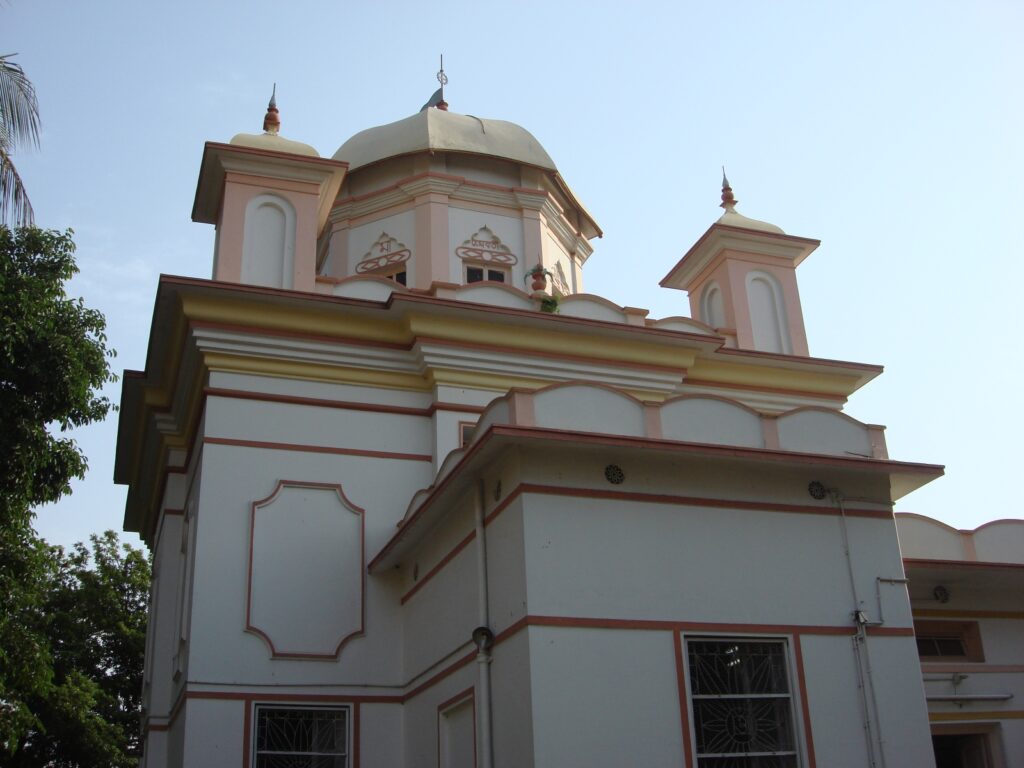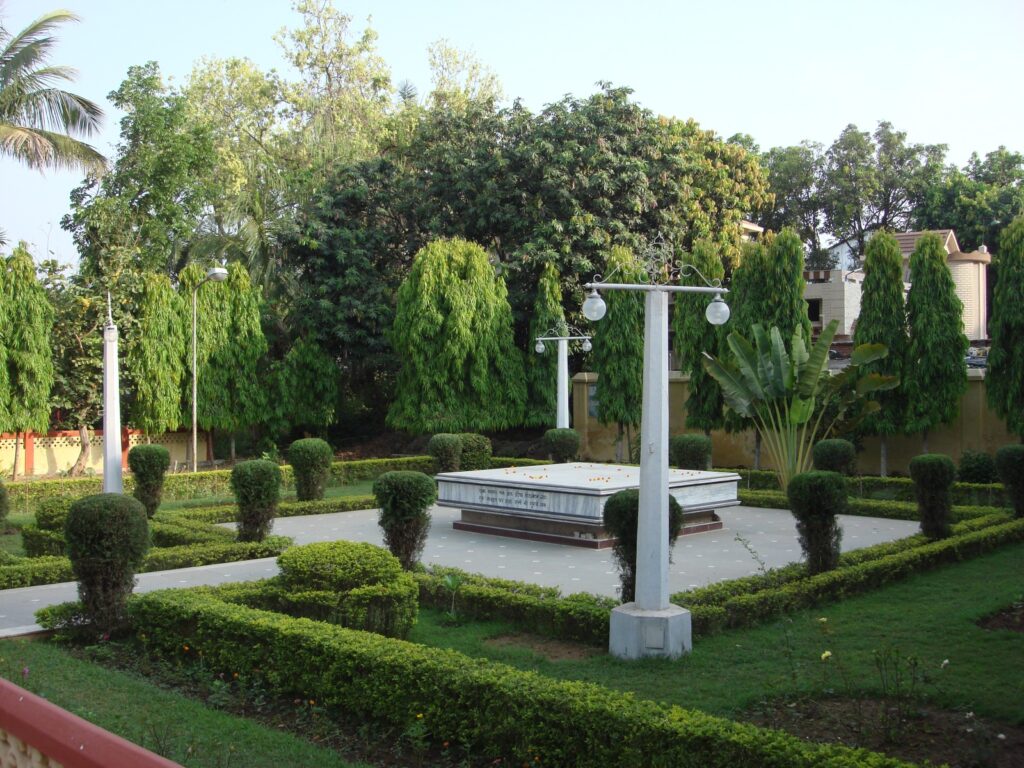About
Dev Sangha ashram, or Navadurga mandir, as it is known locally, was established in 1943 by self realised seer Shrimat Narendranath Brahmachari at Baidyanathdham, Deoghar. Its mission is to resurrect the fundamental applied wisdom of the Rishis of the Upanishad by practising ‘Satyapratistha’ or instituting ones consciousness in the one foundational Reality of SatChitAnanda (Existence Consciousness Bliss) and going through normal life and its duties while embedded in such consciousness, perceiving the world outside and inside as manifestations of the one reality that is both the Real Self and the Supreme Divine.
The central deity of Dev Sangha is Divine Mother Haimavati spoken of as the divine manifestation of Brahman in the Kena Upanishad, who is flanked by Ma Durga and Pathasarathiji on one side and Ma Annapurna and Shivji with ShriGaneshji on the other.
The Dev Sangha lineage starts with and continues from and through supremely self realised seers viz., Shrimat Tailanga Swami of Varanasi, Srimat Bijoykrishna (Howrahr Thakur), Brahmarshi Satyadev, the hallowed author of ‘Sadhan Samar’, the seminal exposition of Shri Shri Devi Saptshati or Chandee and Acharya Shrimat Narendranath Brahmachari, founder of Dev Sangha followed by his beloved disciple late Acharya Saumendranath Brahmachari.


Presently Dev Sangha is led by Srimat Dibakar Brahmachari, initiated disciple of Acharya Saumendranath.
Apart from daily puja, morning and evening aarati and bhog of the established deities in Dev Sangha, several other pujas are held there with great devotion and austerity through the year. These are Durga Puja, Lakshmi puja, Geeta Jayanti, Saraswati Puja, MahaShivaratri (preceded by a fortnight of tapasya and havan), Annapurna puja, Shri Guru Purnima, BharatMata puja, ParamGuruDev Brahmarshi Satyadev’s tithipuja, and Janmashtami puja.
The principal feature of the pujas at Dev Sangha, which sets it apart from all other religious and spiritual institutions is that all pujas are performed congregationally, that is, all worshippers, the devotees, participate directly individually and collectively in the puja by chanting each vedic and upanishadic mantra, led by the Acharya, with full concentration and devotion, keeping the purpose and purport of the mantra in mind, through every stage of the puja stretching over several hours. The puja is followed by collective havan and offering of bhog with joint chanting of vedic mantras and aarati. Worshippers and spectator devotees are graced with distribution of prasad thereafter.